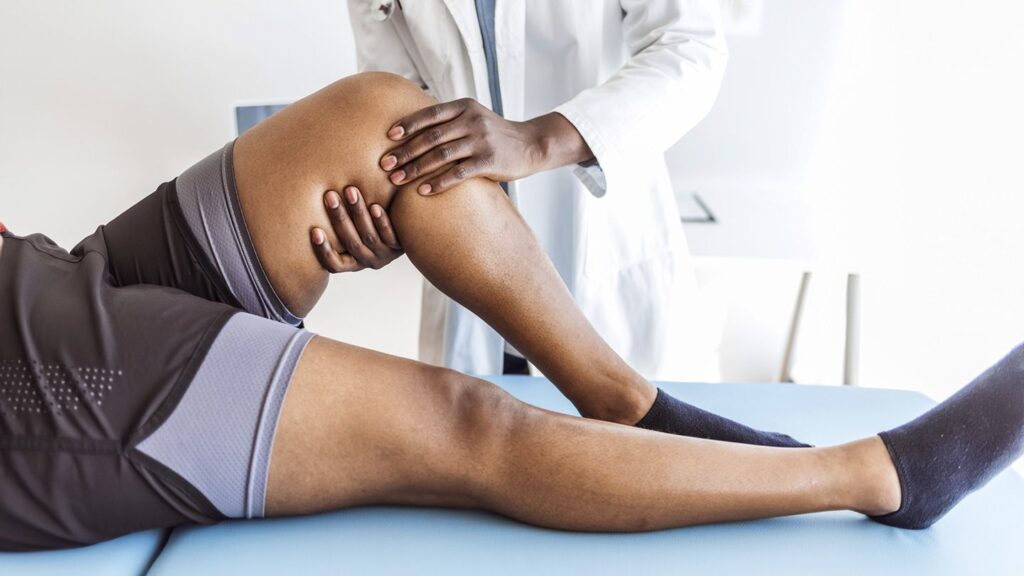Knee wellness is crucial for maintaining an active and pain-free lifestyle. Whether you are an athlete, a fitness enthusiast, or someone who spends long hours working at a desk, taking proactive measures to care for your knees can significantly contribute to overall well-being. One of the fundamental aspects of knee health is regular exercise that focuses on strengthening the muscles around the knee joint. This includes exercises such as squats, lunges, and leg lifts that help build stability and support. Additionally, low-impact activities like swimming and cycling are gentler on the knees while providing excellent cardiovascular benefits. Maintaining a healthy weight is another key factor in knee wellness. Excess body weight puts added stress on the knees, potentially leading to pain and discomfort. Adopting a balanced and nutritious diet, along with regular physical activity, can contribute to weight management and reduce the risk of knee-related issues. It is essential to include foods rich in vitamins and minerals that support joint health, such as omega-3 fatty acids found in fish, flaxseeds, and walnuts.

Proper body mechanics play a crucial role in preventing knee injuries and pain. Whether sitting at a desk or engaging in physical activities, maintaining good posture helps distribute weight evenly across the joints, reducing the strain on the knees. When lifting objects, use proper lifting techniques and avoid putting excessive pressure on the knees. Investing in ergonomic furniture and accessories can also contribute to maintaining optimal body alignment during daily activities. Incorporating flexibility and stretching exercises into your routine can enhance joint mobility and reduce the risk of injuries. Activities like yoga and Pilates focus on improving flexibility and balance, promoting a greater range of motion in the knees. Stretching helps to keep the muscles and tendons around the knee joint flexible, reducing the likelihood of strains or sprains. In the event of knee pain or discomfort, it is crucial to listen to your body and give it the necessary rest.
Applying ice to the affected area and using compression can help reduce inflammation and alleviate pain. If the pain persists, seeking professional medical advice is essential to identify the underlying cause and receive appropriate treatment. Investing in proper footwear is often overlooked but can significantly impact with Knee Pain Relief Programs and Tools. Wearing shoes with good arch support and cushioning helps absorb shock during activities, reducing the impact on the knees. For individuals engaged in sports or high-impact activities, choosing footwear designed for specific purposes can provide additional protection. In conclusion, knee wellness is a holistic endeavor that involves a combination of regular exercise, weight management, proper body mechanics, flexibility training, and attentive self-care. By incorporating these techniques into your lifestyle, you can take proactive steps to manage and prevent knee pain, ensuring that your knees remain strong and functional for years to come. Remember, a mindful approach to knee health contributes not only to physical well-being but also enhances overall quality of life.








 Creating a mind-body balance through ayurvedic practices is exactly what ayurveda brings, the imbalances are addressed through certain practices and applications which are simply not possible without ayurveda practices and medicine, the basic principle of ayurveda living evolves around bringing you closer to natural living, the lives we have created for ourselves is unhealthy because we have moved away from natural things, whether it is the things we consume or the way we live, we have somehow limited the influence of natural things and replaced them with man-made products which are usually convenient but are very harmful for our body and mind in the long run.
Creating a mind-body balance through ayurvedic practices is exactly what ayurveda brings, the imbalances are addressed through certain practices and applications which are simply not possible without ayurveda practices and medicine, the basic principle of ayurveda living evolves around bringing you closer to natural living, the lives we have created for ourselves is unhealthy because we have moved away from natural things, whether it is the things we consume or the way we live, we have somehow limited the influence of natural things and replaced them with man-made products which are usually convenient but are very harmful for our body and mind in the long run.



 In recent years, advancements in technology have significantly leveled the playing field for small businesses, enabling them to compete with larger corporations on a global scale. Online platforms, social media and e-commerce have revolutionized the way businesses reach customers, making it easier for small enterprises to establish a strong online presence and reach a wider audience. Embracing these digital tools can give your small business a competitive edge and open up new possibilities for growth and expansion. Furthermore, owning a small business grants you the freedom to create a positive impact and leave a lasting legacy. Whether it is supporting charitable causes, implementing sustainable practices or fostering a welcoming work environment, you have the ability to shape your business in a way that aligns with your values and contributes to the greater good. In conclusion, taking the plunge into small business ownership offers a plethora of advantages that extend far beyond the potential for financial success. From personal growth and fulfillment to making a positive impact on your community and the world, the journey of entrepreneurship is filled with opportunities to thrive and make a difference.
In recent years, advancements in technology have significantly leveled the playing field for small businesses, enabling them to compete with larger corporations on a global scale. Online platforms, social media and e-commerce have revolutionized the way businesses reach customers, making it easier for small enterprises to establish a strong online presence and reach a wider audience. Embracing these digital tools can give your small business a competitive edge and open up new possibilities for growth and expansion. Furthermore, owning a small business grants you the freedom to create a positive impact and leave a lasting legacy. Whether it is supporting charitable causes, implementing sustainable practices or fostering a welcoming work environment, you have the ability to shape your business in a way that aligns with your values and contributes to the greater good. In conclusion, taking the plunge into small business ownership offers a plethora of advantages that extend far beyond the potential for financial success. From personal growth and fulfillment to making a positive impact on your community and the world, the journey of entrepreneurship is filled with opportunities to thrive and make a difference.